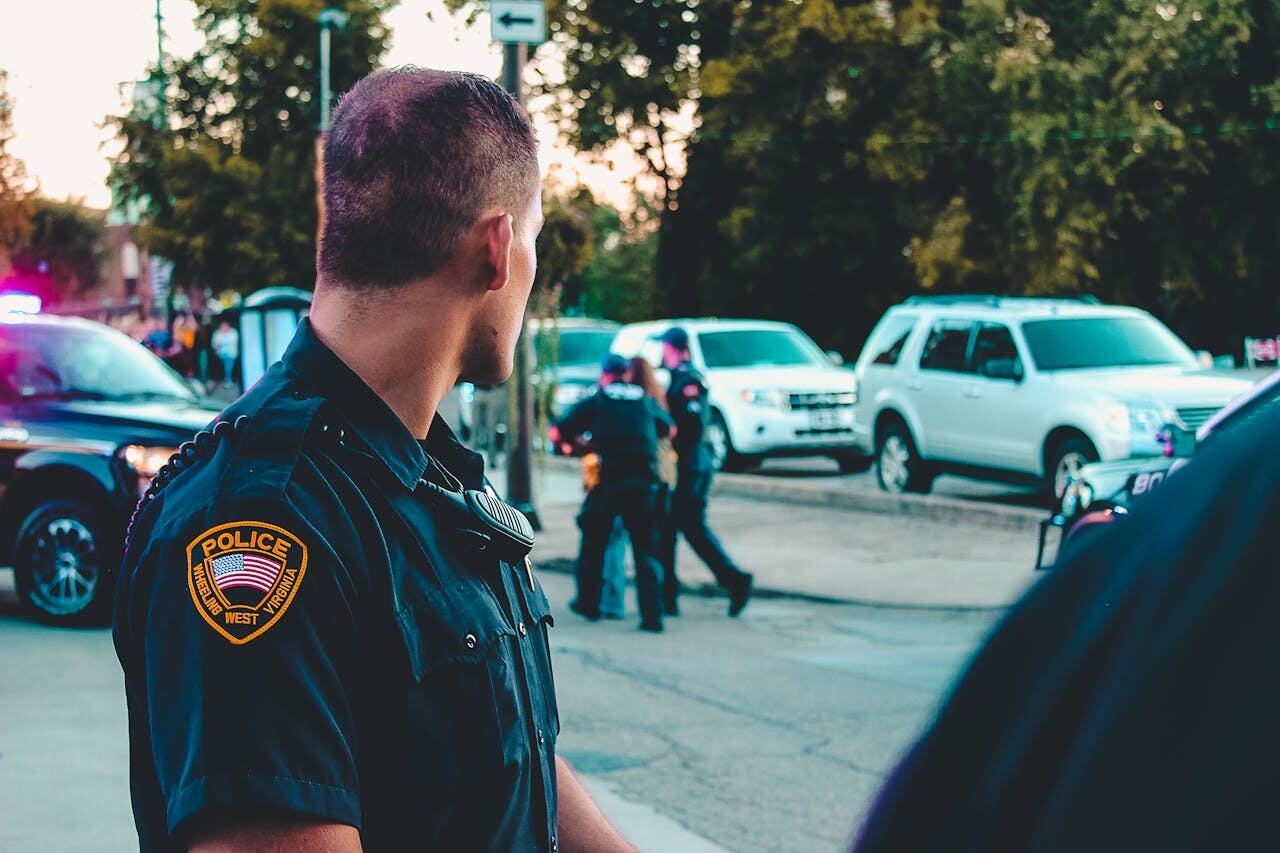You’ve seen the headlines, heard the debates, but what do the numbers really say about law enforcement? As someone who’s been on both sides of the thin blue line, I want to give you the raw, unfiltered truth about the stats that matter most.
We’ll dive into the data that defines modern policing, from the changing face of law enforcement to the challenges officers face on the streets. No spin, no agenda, just the facts. Ready to see what the numbers really mean? Let’s go.
Table of Contents:
- Law Enforcement Data Collection and Statistics
- Female Representation in Law Enforcement
- Crime Rates and Clearance Rates
- Law Enforcement Officers Killed in the Line of Duty
- Law Enforcement Agencies and Personnel
- Conclusion
Law Enforcement Data Collection and Statistics
Law enforcement data is the lifeblood of our justice system. It’s what drives decisions, shapes policies, and ultimately, keeps our communities safe. But have you ever stopped to think about where this data comes from? Or how it’s collected?
Types of Data Collected
When it comes to law enforcement statistics, there’s a whole world of information out there. We’re talking crime rates, clearance rates, personnel numbers, and so much more. This data paints a picture of our law enforcement landscape, from the national level right down to our local police departments. But it’s not just about the numbers. Behind every statistic is a story – a crime committed, a case solved, or a life changed. That’s why it’s crucial that we get this data right.
Sources of Law Enforcement Data
So, where does all this data come from? You might be surprised to learn that there’s no one-size-fits-all approach. Different agencies have different methods of data collection, from old-school pen and paper to cutting-edge digital systems. At the national level, the FBI’s Uniform Crime Reporting (UCR) Program is a major data source. But there are plenty of other players too, like the Bureau of Justice Statistics and the National Incident-Based Reporting System (NIBRS).
Importance of Accurate Data Collection
Here’s the thing – all this data is only as good as the methods used to collect it. If agencies aren’t on the same page, or if there are gaps in reporting, it can skew the numbers and lead to some seriously flawed conclusions. That’s why initiatives like the National Crime Statistics Exchange (NCS-X) are so important. By standardizing data collection and reporting across the board, we can ensure that our law enforcement statistics are as accurate and comprehensive as possible. Because at the end of the day, this isn’t just about crunching numbers. It’s about using data to make a real difference in people’s lives. And that’s a responsibility we can’t afford to take lightly.
Female Representation in Law Enforcement
Back in the 1980’s, I could count the number of female officers I knew on one hand. It looked to be a boys’ club, plain and simple. But over the years, I’ve watched as more and more women have broken through those barriers and proven that they have what it takes to serve and protect. Today, women make up around 13% of law enforcement personnel in the United States. That might not sound like a lot, but it’s a huge increase from just a few decades ago. In fact, the number of female officers has more than doubled since the 1980s. But here’s the thing – we still have a long way to go. Women are underrepresented at every level of law enforcement, from patrol officers to leadership positions. And that’s a problem, because diversity isn’t just a buzzword – it’s a necessity.
Challenges Faced by Female Officers
Being a woman in law enforcement comes with its own unique set of challenges. From ill-fitting uniforms to outdated attitudes, female officers often have to work twice as hard to prove themselves in a male-dominated field. But perhaps the biggest challenge is the culture itself. Law enforcement has a long history of machismo and “boys will be boys” mentality. And while things are changing, there’s still a lot of work to be done to create a truly inclusive environment for female officers.
Initiatives to Increase Female Representation
So, what can we do to level the playing field? For starters, we need to make a concerted effort to recruit and retain more women in law enforcement. That means targeted outreach, mentorship programs, and a commitment to creating a welcoming and supportive workplace culture. We also need to address the systemic barriers that prevent women from advancing in their careers. Things like inflexible schedules, lack of childcare options, and outdated policies around pregnancy and maternity leave. But perhaps most importantly, we need to recognize and celebrate the incredible contributions that female officers make every single day. Because at the end of the day, it’s not about meeting quotas or checking boxes – it’s about building a law enforcement community that reflects the diversity and strength of the people we serve.
Crime Rates and Clearance Rates
Crime rates and clearance rates – two sides of the same coin. One tells us how much crime is happening in our communities, while the other shows us how effective our law enforcement agencies are at solving those crimes. But what factors influence these rates? And why do they matter so much?
Current Law Enforcement Crime Rate Overview
Overall Crime Rates: In 2022, the FBI reported a national decrease in violent crime by approximately 1.7% compared to 2021. Specific categories saw varying changes: murder and non-negligent manslaughter decreased by 6.1%, revised rape incidents decreased by 5.4%, aggravated assaults decreased by 1.1%, and robbery incidents increased by 1.3% (USAFacts) (Federal Bureau of Investigation).
Data Collection and Reporting Issues: The FBI’s transition to the National Incident-Based Reporting System (NIBRS) has resulted in gaps in crime data reporting. As of 2022, about two-thirds of law enforcement agencies were included in the FBI’s crime database, leaving significant data gaps due to non-participation by some major departments like the NYPD and LAPD (The Marshall Project) (Federal Bureau of Investigation).
Property Crime: The property crime rate in the U.S. increased by 6.7% in 2022, marking the first increase since 2001. This rise was largely driven by an increase in larceny-theft incidents, which went up by 7.4% (USAFacts).
Law Enforcement Staffing: The number of police officers per capita has been declining. By 2022, the number of police officers per 100,000 people had fallen by 8.9% from its peak in 2009 (USAFacts).
Hate Crimes: The FBI’s 2022 data indicated a significant increase in reported hate crimes, with 14,631 law enforcement agencies participating. This resulted in 11,634 hate crime incidents being recorded, with the majority motivated by biases related to race, ethnicity, and ancestry, followed by religion and sexual orientation (Federal Bureau of Investigation).
Firearm-related Crimes: Although there was a decrease in the firearm death rate to 14.5 deaths per 100,000 people in 2022, this rate is still higher than any year from 1999 to 2020 (USAFacts).
Factors Influencing Crime Rates
When it comes to crime rates, there’s no one single cause. Instead, it’s a complex interplay of social, economic, and environmental factors. Things like poverty, lack of education and job opportunities, and easy access to drugs and weapons can all contribute to higher levels of criminal activity. But it’s not just about the big picture stuff. Even seemingly small things, like the layout of a neighborhood or the presence of abandoned buildings, can have an impact on crime rates. That’s why it’s so important for law enforcement to take a holistic approach when it comes to preventing and reducing crime. Of course, preventing crime is only half the battle.
Once a crime has been committed, it’s up to law enforcement to solve it. And that’s where clearance rates come in. A high clearance rate sends a message to criminals that they won’t get away with their actions. It also helps to build trust between law enforcement and the community, because people know that the police are working hard to keep them safe. But a low clearance rate? That’s a problem. It can erode public confidence in law enforcement and make people feel like they’re on their own when it comes to protecting themselves and their property.
Strategies to Improve Clearance Rates
So, how can we improve clearance rates? Well, there’s no magic bullet, but there are a few key strategies that can help. First and foremost, we need to invest in our investigators. That means providing them with the training, resources, and support they need to do their jobs effectively. It also means fostering a culture of collaboration and information-sharing between different agencies and jurisdictions. We also need to leverage technology to our advantage. Things like DNA analysis, surveillance cameras, and data analytics can all help us to identify and apprehend suspects more quickly and efficiently. But perhaps most importantly, we need to build strong relationships with the communities we serve. When people trust and respect law enforcement, they’re more likely to come forward with information and cooperate with investigations. And that can make all the difference when it comes to solving crimes and keeping our streets safe.
Law Enforcement Officers Killed in the Line of Duty
There’s no greater sacrifice than laying down one’s life in service to others. And yet, every year, far too many law enforcement officers make that ultimate sacrifice while protecting and serving their communities. It’s a sobering reality, and one that we must never forget. These brave men and women put their lives on the line every single day, knowing full well the risks they face. They do it because they believe in something greater than themselves – the safety and well-being of the people they serve. When an officer is killed in the line of duty, it’s not just a loss for their family and friends. It’s a loss for the entire community, and indeed, for the entire nation.
It’s a reminder of the incredible courage and dedication that our law enforcement officers embody, and of the debt of gratitude that we owe them. But it’s also a call to action. We must do everything in our power to prevent these tragedies from happening in the first place. That means investing in better training and equipment for our officers, and working to build stronger, more trusting relationships between law enforcement and the communities they serve. It means recognizing the incredible sacrifices that our officers make every day, and honoring their memory by continuing to fight for justice, safety, and peace in our communities. Because at the end of the day, that’s what it’s all about. It’s about creating a world where no officer has to make that ultimate sacrifice, and where every person can feel safe and protected in their own homes and neighborhoods. And that’s a goal that we must never stop working towards, no matter how difficult the road ahead may be.
Law Enforcement Agencies and Personnel
When most people think of law enforcement, they picture the brave men and women in uniform patrolling our streets. But the truth is, there’s a whole lot more to it than that. Behind every officer on the beat, there’s a complex network of agencies, departments, and personnel working tirelessly to keep our communities safe. At the federal level, you’ve got heavy hitters like the FBI and the DEA. These agencies tackle the big stuff – organized crime, drug trafficking, terrorism, you name it. They’ve got the resources and the expertise to take on the toughest cases, and they do it with a level of professionalism and dedication that’s truly awe-inspiring.
But let’s not forget about the unsung heroes of law enforcement – our local police departments and sheriffs’ offices. These are the folks who are out there every day, responding to 911 calls, patrolling our neighborhoods, and building relationships with the communities they serve. And then there are the specialized units – SWAT teams, K-9 units, crime scene investigators. These are the men and women who have honed their skills and expertise to tackle the most challenging and dangerous situations imaginable. But here’s the thing – none of this would be possible without the hardworking law enforcement personnel who make it all happen.
From the dispatchers who field those 911 calls to the crime analysts who pore over data looking for patterns and trends, every single person plays a vital role in keeping us safe. And let’s not forget about the support staff – the administrative assistants, the IT professionals, the maintenance crews. These folks may not wear a badge, but they’re just as essential to the mission of law enforcement. So the next time you see an officer on the street, or hear about a big bust on the news, take a moment to think about all the incredible people working behind the scenes to make it happen. Because at the end of the day, it takes a village to keep our communities safe – and we’re all in this together.
Law enforcement data isn’t just numbers; it’s the backbone of safe communities, shaped by diverse collection methods and crucial for informed decisions. Despite progress, women in law enforcement face barriers yet offer invaluable diversity. Crime rates reflect complex social issues while clearance rates gauge police effectiveness. Remembering officers lost in duty honors their sacrifice and underscores our collective responsibility towards safety.
Conclusion
Law enforcement statistics paint a complex picture of the challenges and triumphs of modern policing. Think about it – as crimes evolve and teams grow more varied, those stats really bring to life the everyday experiences of our frontline heroes.
But beyond the data points and percentages lies a deeper truth: behind every badge is a human being, dedicated to serving and protecting their community. These statistics remind us of the bravery, sacrifice, and commitment that define the best of law enforcement.
Armed with these insights, it’s time to have real conversations and work side by side. Our goal? A community where police officers and the people they protect both thrive. The numbers may tell a story, but it’s up to us to write the next chapter.
Sources:


